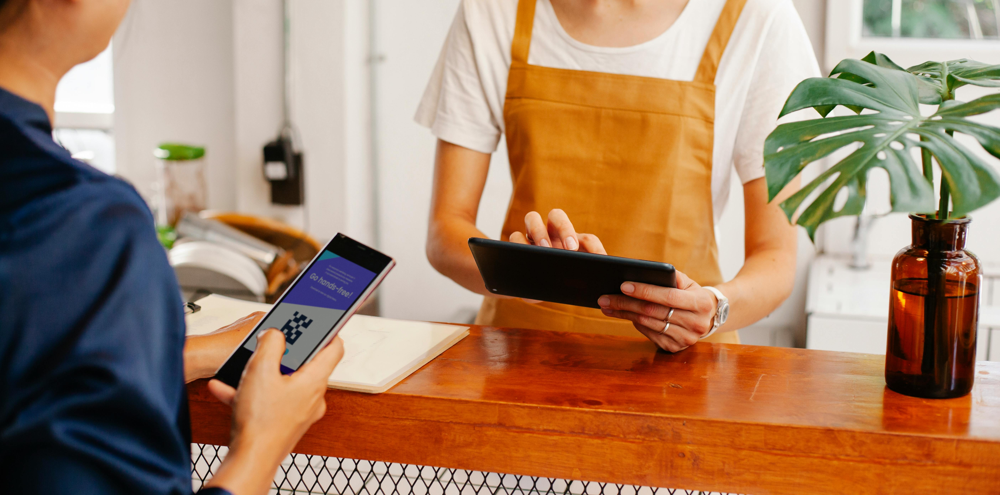Real-Life Impact: How Branded QR Codes Transform Customer Engagement Written on . Posted in Category 1.

In an era where digital and physical experiences seamlessly converge, leading brands are turning to branded QR codes to revolutionize customer engagement. These codes are more than just a technological novelty - they're powerful tools that merge offline touchpoints with online interactivity, resulting in streamlined processes, enhanced experiences, and measurable marketing success. Below, we explore real-life scenarios where renowned companies have successfully integrated branded QR codes into their strategies.
Scenario 1: Starbucks Mobile Ordering & Payment
Overview:
Starbucks has long been a pioneer in leveraging technology to improve customer service. With the growing demand for contactless solutions, the coffee giant enhanced its mobile app by integrating QR codes for ordering and payment.
Real-Life Impact:
- Streamlined Experience: Customers scan a QR code at the pickup counter to confirm their orders, reducing wait times and minimizing errors.
- Increased Efficiency: This integration not only speeds up service during peak hours but also provides valuable insights into customer preferences through app analytics.
- Enhanced Engagement: The branded QR codes, customized with Starbucks' iconic logo and color palette, reinforce brand identity every time a customer interacts with the service.
Result: The move contributed to higher customer satisfaction scores and increased order accuracy, reinforcing Starbucks' commitment to a seamless digital experience.
Scenario 2: McDonald's Contactless Ordering During the Pandemic
Overview:
Amid the COVID-19 pandemic, safety and convenience became top priorities for consumers. McDonald's rapidly adapted by incorporating QR codes into its digital menu boards and drive-thru operations to facilitate contactless ordering.
Real-Life Impact:
- Safety & Convenience: Customers use their smartphones to scan QR codes, accessing digital menus that enable them to order and pay without physical interaction.
- Operational Efficiency: This contactless system helped reduce order wait times and streamlined the ordering process during periods of high demand.
- Data Collection: McDonald’s leveraged the analytics from QR code scans to monitor customer behavior and optimize menu offerings in real time.
Result: The initiative not only enhanced customer safety during a critical time but also demonstrated how digital transformation could lead to operational improvements and deeper customer insights.
Scenario 3: Coachella Festival's Digital Engagement
Overview:
Large-scale events like Coachella have redefined the festival experience by incorporating technology to manage crowds, ticketing, and on-site purchases. Branded QR codes played a pivotal role in enhancing attendee engagement throughout the event.
Real-Life Impact:
- Seamless Ticketing: Attendees scanned QR codes for contactless ticket verification, significantly reducing queues at entry points.
- Enhanced On-Site Experience: QR codes were used on wristbands and signage to provide instant access to exclusive content, artist information, and real-time updates on event schedules.
- Increased Revenue Opportunities: By directing users to digital platforms for merchandise and food orders, Coachella generated additional revenue while improving the overall attendee experience.
Result: The use of branded QR codes not only streamlined operations but also transformed how festival-goers interacted with the event, setting a new standard for digital engagement at live events.
Best Practices from Real-World Implementations
Drawing inspiration from these real-life scenarios, here are several best practices to optimize your branded QR code strategy:
1. Prioritize a Seamless User Experience
- Mobile Optimization: Ensure that all landing pages and digital content are mobile-friendly. Fast load times and intuitive design are crucial to maintaining user engagement.
- Clear Calls-to-Action: Whether it's ordering a coffee or accessing festival information, make sure the next steps are obvious and compelling.
2. Customize for Brand Consistency
- Visual Identity: Incorporate your logo, brand colors, and design elements into your QR codes to enhance recognition and trust.
- Consistency Across Touchpoints: Use branded QR codes consistently across various channels - online, in-store, or at events - to create a cohesive customer journey.
3. Leverage Analytics for Continuous Improvement
- Track Engagement: Monitor scan rates, conversion metrics, and user demographics to understand how customers interact with your QR codes.
- Data-Driven Decisions: Use these insights to adjust campaign strategies, optimize placements, and tailor content for higher engagement and ROI.
Conclusion
The real-life successes of brands like Starbucks, McDonald's, and Coachella illustrate the transformative impact of integrating branded QR codes into marketing strategies. These examples demonstrate that QR codes can drive efficiency, improve customer experience, and deliver actionable insights that boost overall marketing ROI.
For businesses aiming to bridge the gap between offline and online engagement, branded QR codes offer an innovative solution backed by real-world success stories. By embracing these best practices and learning from industry leaders, your brand can harness the power of QR codes to create more interactive and meaningful customer experiences - ultimately driving growth and SEO success. Jumpstart your QR code journey at brandedqrcode.com!